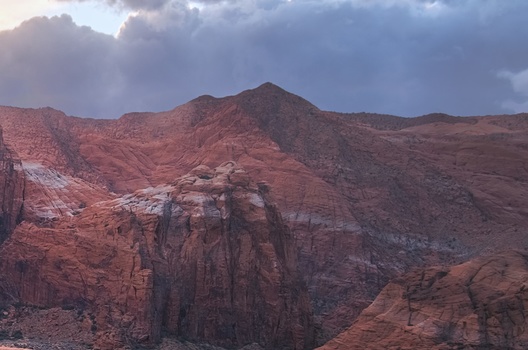The majority of landscape photographers tend to prefer keeping the entire scene in focus from back to front, using smaller apertures to maintain greater depth of field. Using this simple technique, any photographer can quickly find the hyperfocal distance, or the focusing distance at which a lens, given any aperture and focal length, will produce the greatest depth of field.
Capturing Sharp Images
Many photographers abide by the rule of thumb to focus one-third of the way into the scene. This method works well enough, provided your aperture is small enough, your focal length wide enough, and assuming there are no close foreground objects that you would like to keep in focus. In the age of digital media sharing, most photographers are sharing their images from their cell phones, with the assumption that the majority of their audience will be viewing from their cell phones as well. This means that focusing errors often go unnoticed and focusing successes often go unappreciated. For example, the image above required careful consideration to keep the close foreground pebbles in focus while also keeping the background within the focal plane, yet on social media, the file is compressed and downsized to the point where it wouldn’t have mattered if I’d missed focus a bit.

Instagram notwithstanding, many of us like to achieve maximum detail and clarity throughout our images, whether for the sake of making higher quality prints, or simply for the satisfaction of making a quality image that looks good at all sizes. Many photographers envy the sharp images of a high-resolution full frame camera, blaming their soft results on a smaller sensor or a cheap lens when in reality, most of their problems are probably due to poor focusing technique. The image featured above is sharp enough for large printing and was made with a “cheap” manual focus lens (Rokinon 12mm f/2.0) and an APS-C camera (Fujifilm X-T2).
Hyperfocal Distance
The typical method for finding hyperfocal distance involves using charts or calculators available online or with apps such as PhotoPills. Calculating the hyperfocal distance is one thing, but actually focusing your lens at that exact distance is a whole separate challenge. Even with a distance scale on your lens or in camera, it can be difficult to ensure that you are focused at the hyperfocal distance, as those scales are often calibrated poorly. When you’ve put hard work and preparation into a shoot, you want to be confident that your images are in focus when you get home to process them. The best foolproof method for finding the hyperfocal distance doesn’t even require any calculations or charts and can be done completely in the moment prior to releasing the shutter.
- Begin with setting your aperture as dictated by the scene, keeping in mind that the smaller your aperture, the closer your hyperfocal distance will be.
- Next, set your lens to manual focus and focus it at the nearest distance it will allow.
- Using your camera’s display zoom at its maximum setting, view an area in the farthest part of the scene that has fine details to focus on, such as a distant mountain or an object near the horizon.
- Finally, turn your focus ring toward infinity until the finest details first appear at their sharpest. This is the hyperfocal distance for your current focal length and aperture setting. It’s as simple as that. If you turn beyond this point, you will be losing depth of field in your foreground, as the hyperfocal distance will be moving away from the camera.

Once you have found the hyperfocal distance, you can now compose the scene knowing that you’ve already established the greatest possible depth of field for the chosen aperture. Keep in mind, finding the hyperfocal distance does not mean that everything will be in focus. It simply means that you have found the focusing distance at which your depth of field will be greatest. Near foreground objects may still be out of focus and can either be composed out of the scene, brought into focus by selecting a smaller aperture and repeating the steps above, or by focus stacking, if all else fails.
This method is ideal because it is based on visual feedback, rather than trusting in the distance scales provided by your lens or camera. You can leave a scene with absolute confidence knowing that you’ve captured everything in crisp detail.